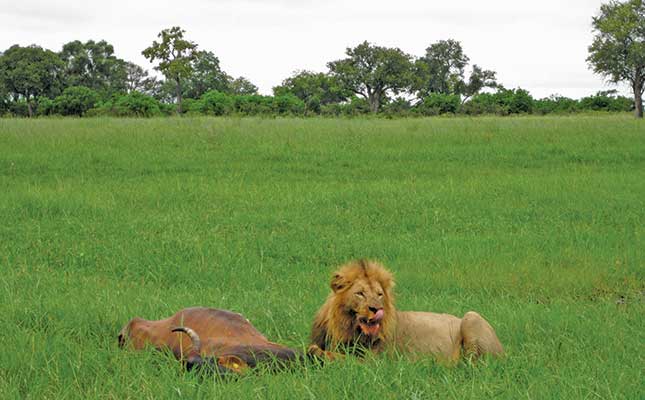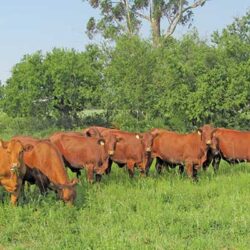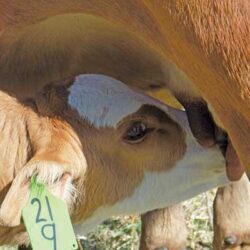When wild lions sneak up on a herd of cattle to grab an easy meal, the dice seem to be loaded more heavily against certain herd members. This is according to a study conducted by scientists at the University of Pretoria (UP).
The study was based on 168 cattle deaths linked to lions in the eastern Panhandle area of Botswana’s Okavango Delta between 2016 and 2018.
The research, which was conducted with international collaborators, suggests that horn size, certain hide colours and patterns, age, and social behaviour all seem to play a part in whether a particular animal ends up being targeted.
While big bulls with long, sharp horns may be better equipped to fight off a lion attack, the more social behaviour of female herd members can offer considerable advantages.
“Heifers are likely to benefit from safety in numbers, whereas bulls spend more time on their own away from the herds, rendering them more susceptible to predators,” say Prof Michael Somers and Dr Florian Weise, co-authors of the paper, which is titled ‘Lions prefer killing certain cattle types’.
Weise and Somers have collaborated on a range of studies on lion predation and human conflict along the northern border of Botswana. Weise has done these as part of his postdoctoral studies co-funded by UP, while Somers holds the Eugène Marais Chair of Wildlife Management at UP’s Mammal Research Institute.
The researchers’ overall finding was that lions showed specific preferences for particular cattle types. Moreover, they exploited cattle when available and repeatedly killed cattle in areas where they were left unguarded or unprotected, also targeting animals that were easiest to catch.
Somers notes that lion populations across Africa have dropped precipitously over the past century, putting them at risk of local extinction in some areas, especially when they move out of protected parks and are in danger of being killed by livestock owners protecting their herds.
“We found that lions were most active at night, with 87% of cattle killings happening between dusk and dawn,” say Weise and Somers.
Because the Okavango lion population is one of the last strongholds for the long-term survival of the species, the joint research of the US-based CLAWS Conservancy with UP has investigated several potential strategies to reduce such conflict. The University of Newcastle in Australia and the University of Siegen in Germany have also collaborated on the research.
Previous research has included a ‘lion alert’ pilot study in which herders received advance warning of potential lion attacks by combining GPS, tracking transponders and cell phone technology. Other research has focused on encouraging herders to reduce predation by using and building better lion-proof kraals, particularly during the dry season, when cattle walk further in search of water and grazing.
Lions’ preferences
In the latest study to mitigate conflict with livestock herders, five wildlife researchers teamed up to establish whether lions showed any marked preferences for certain cattle, such as animals with no horns or very small ones.
The researchers found that, unsurprisingly, cattle with no horns were preferred by lions, while long-horned cattle were generally ‘highly avoided’. The predators also displayed a distinct preference for cattle with patterned coats.
“Cattle with black-and-brown mottled pelage [coat colouring] were most preferred, while pure black, pure white, and dark brown colouring [was] significantly avoided,” said the research team, which also included Mathata Tomeletso and Andrew Stein of the CLAWS Conservancy and Matt Hayward of the University of Newcastle’s School of Environmental and Life Sciences.
The lions’ preference for polled cattle or those with small horns is understandable, as this reduces the risk of injury. However, the more frequent attacks on cattle with mottled or non-uniform-coloured coats is more difficult to explain.
Weise and his colleagues note that lions, like domestic cats, have more rods and cones
in the retinas of their eyes, as well as a tapetum lucidum (reflective layer behind the retina), which increases the amount of light available for enhanced night vision.
“But this comes at the cost of not seeing colour as well as, for instance, humans can,” the authors say.
“This explains why mixed pelage does not afford any protection, but not why plain-coloured cattle are eaten less. Perhaps, as lions respond rapidly to moving prey but seem to have difficulty seeing stationary animals, the mixed pelage pattern helps identify movement and [animals with this coat] are [thus] attacked more frequently.”
Young calves with little experience of predation were also preferred targets, especially when they stampeded in panic during lion attacks inside poorly protected enclosures.
Another notable observation from the study was that it could be counterproductive for herders to drive lions off cattle kills.
While this reaction was understandable, lions were more likely to mount repeated ‘hit-and-run’ attacks to get enough food to meet their nutritional requirements.




